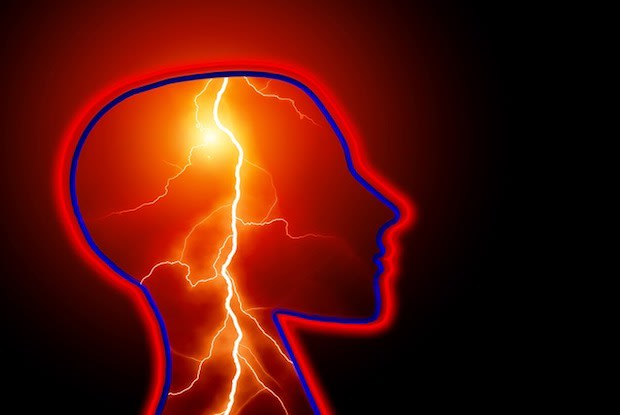Table of Contents
V. Diagnosing a Seizure Disorder
What is a Seizure?
Seizures can be a distressing event for the person seizing and those around them. People typically have no idea when a seizure will strike, which can make seizure disorders terrifying for those diagnosed. Before your doctor can address the symptoms and treatments for seizure disorders, it is essential to understand how and why seizures occur.
Seizures happen when an abnormal electrical discharge fires off in the brain. The brain is always full of organized electrical activity, coordinating brain cells and neurons. A seizure takes place when this electrical activity goes into overdrive.
Many people may have a seizure once in their life, but if you experience more than one seizure, you may have a disorder like epilepsy. There are several medications available to help prevent seizures if you are prone to these events, including Keppra (levetiracetam), Topamax (topiramate), Dilantin (phenytoin), or Lamictal (lamotrigine). Read on to learn more about symptoms and treatments for seizure disorders. [1]
Epilepsy is a neurological disorder characterized by a wide range of seizure types. This condition is the fourth most common neurological disorder in the world and can affect people of any age. If you have epilepsy, recurrent and unprovoked seizures are often chronic. [2] There are several reasons epilepsy may occur, including genetics, brain injury, or brain structure, but the cause is unknown in many cases. Over 65 million people in the world are living with epilepsy. [3] If you have a single seizure, you most likely do not have epilepsy. If you have two or more seizures of unknown cause, you should seek the help of a medical professional. If you know someone with a seizure disorder, it's also a good idea to know what to do when someone is having a seizure. The symptoms of epilepsy vary on the type of seizure you are experiencing. In general, abnormal electrical activity affects your coordination and may lead to unconsciousness. If you have epilepsy, you will likely have the same seizure type every time, so your symptoms will usually be consistent. Seizure symptoms may include: Focal and generalized seizures are the two major types of seizures. Focal seizures start in one area of the brain and may be simple or complex. Focal seizures may become generalized if they spread to other areas. Focal seizures are then divided into two smaller categories. Learn more below. These seizures are also known as auras. They do not cause a person to lose consciousness but can affect four areas of the brain and body. Complex focal seizures usually occur after a simple focal seizure. People who experience this type may experience a loss of awareness or consciousness. Patients may stare blankly into space and display repetitive movements like blinking, grunting, or lip-smacking. [5] These types of seizures differ from focal seizures because they affect all areas of the brain. There are six main types of generalized seizures. Each one comes with its specific symptoms. Absence seizures: This type was previously referred to as petit mal seizures. Children are most likely to experience absence seizures. Symptoms usually include staring into space, eye blinking, or lip-smacking. A loss of awareness is also common. These seizures may occur in clusters. Tonic seizures: A person’s muscles will stiffen during this type of seizure. When the muscles are affected in the back, arms, and legs, they are at risk of falling to the ground. Atonic seizures: Seizure patients can suddenly collapse or fall during this seizure. A loss of muscle control is to blame for losing balance and falling to the ground. Clonic seizures: Repeated, rhythmic, and jerking movements are most often associated with this type of seizure. The neck, face, and arms are the most commonly affected areas of the body. Myoclonic seizures: Sudden twitching or jerking movements of the arms and legs occur in myoclonic seizures. Tonic-clonic seizures: This type was once referred to as grand mal seizures and causes the most dramatic symptoms. These seizures cause a loss of consciousness, body stiffening, a loss of bladder control, and sometimes tongue-biting. [4] If you experience more than two seizures of unknown cause, your doctor may subject you to several tests for a proper diagnosis. A neurological exam will test your motor and mental abilities. A blood test may also be done to rule out other possible conditions that may be causing seizures. Getting a diagnosis is the first step to preventing complications that can arise with seizure disorders. Brain abnormalities may be detected through an electroencephalogram (EEG). This test is used to diagnose epilepsy by attaching electrodes to the scalp. These electrodes record electrical activity in the brain and can record seizures you may experience. A CT scan can utilize x-rays to take images of the brain, which your doctor can examine for any abnormalities, tumors, or cysts. [4] Prescription medications have been shown to improve and control seizures significantly. These drugs will not cure epilepsy but can stave off possible seizures if they are taken as prescribed. Medications like Topamax (topiramate) belong to a class of drugs called sulfamate-substituted monosaccharide anticonvulsants. Researchers are unsure how these drugs interact with the brain, but they are thought to work on chemicals, channels, receptors, and enzymes in the brain to prevent seizures. Dilantin (phenytoin), Lamictal (lamotrigine) and Keppra (levetiracetam) work similarly on the brain. [6] In some cases, Keppra can cause side effects that involve mood swings and aggression. This symptom is referred to as “Keppra rage.” If you notice you are suffering from dampened mood or behavioral abnormalities, you may want to talk to your doctor to adjust your treatment plan. [7] The content in this article is intended for informational purposes only. This website does not provide medical advice. In all circumstances, you should always seek the advice of your physician and/or other qualified health professionals(s) for drug, medical condition, or treatment advice. The content provided on this website is not a substitute for professional medical advice, diagnosis, or treatment.
Understanding Epilepsy
a. Symptoms Epilepsy
Focal Seizures
a. Simple Focal Seizures

b. Complex Focal Seizures
Generalized Seizures
Diagnosing a Seizure Disorder

Medications
